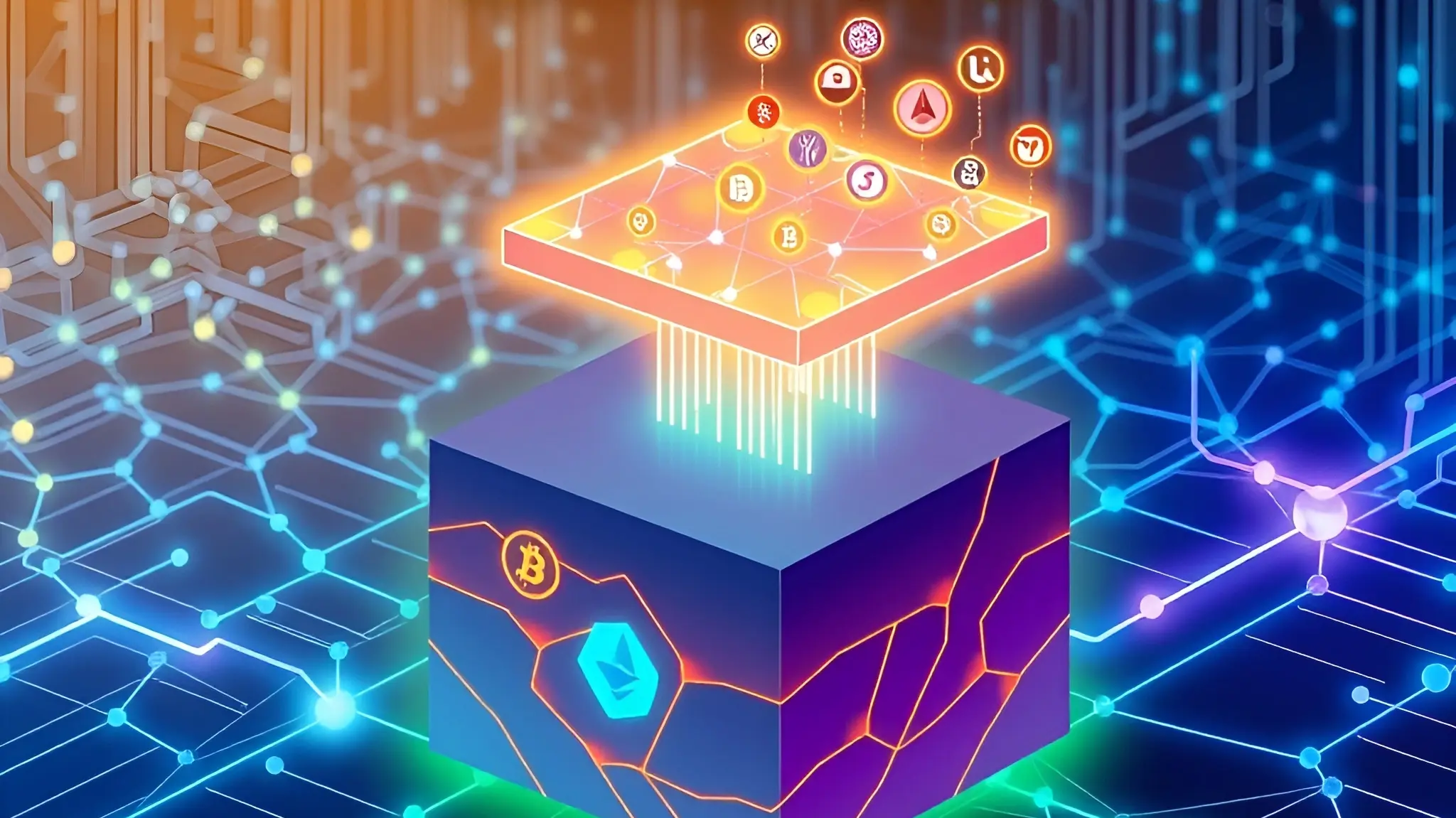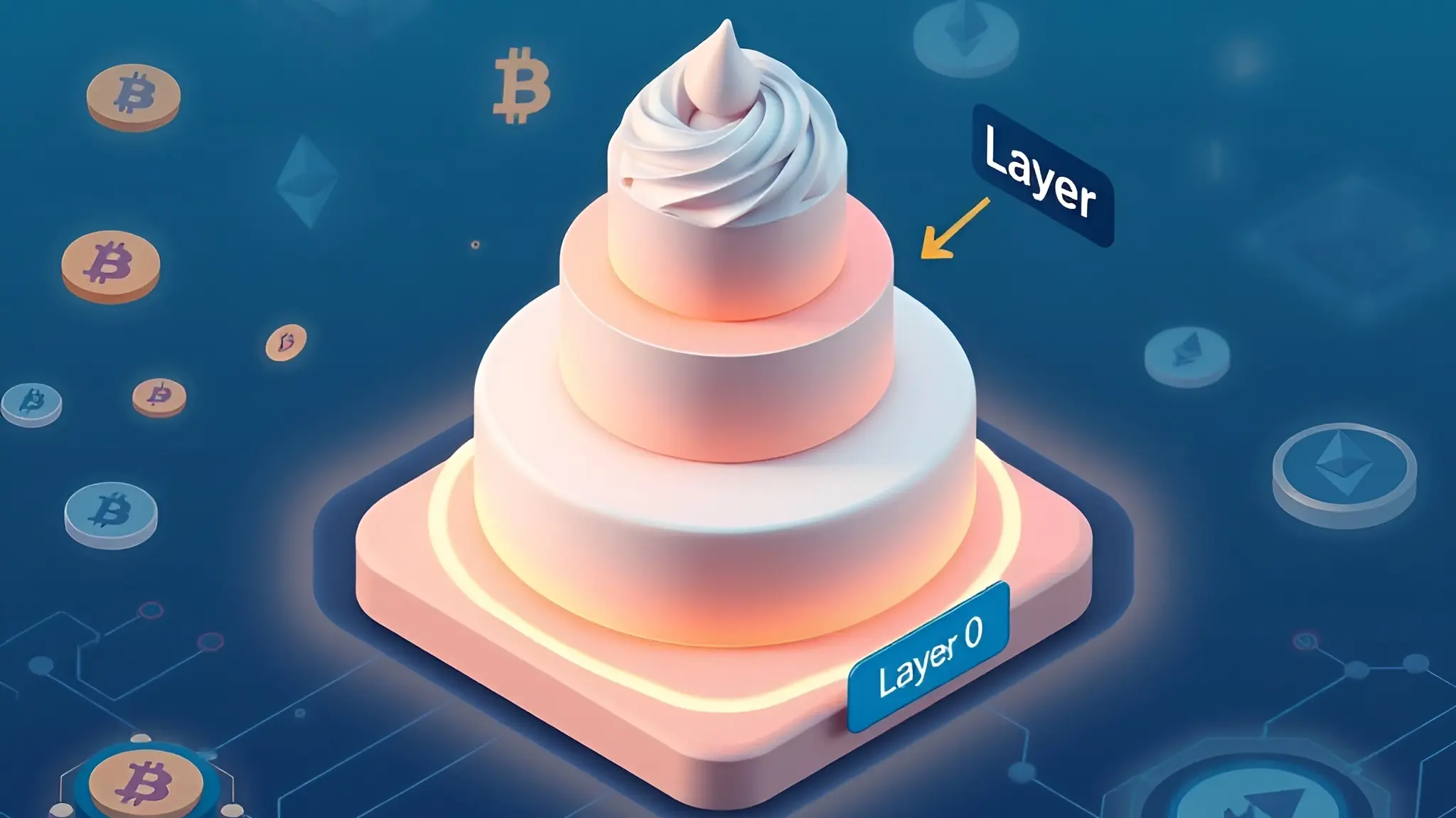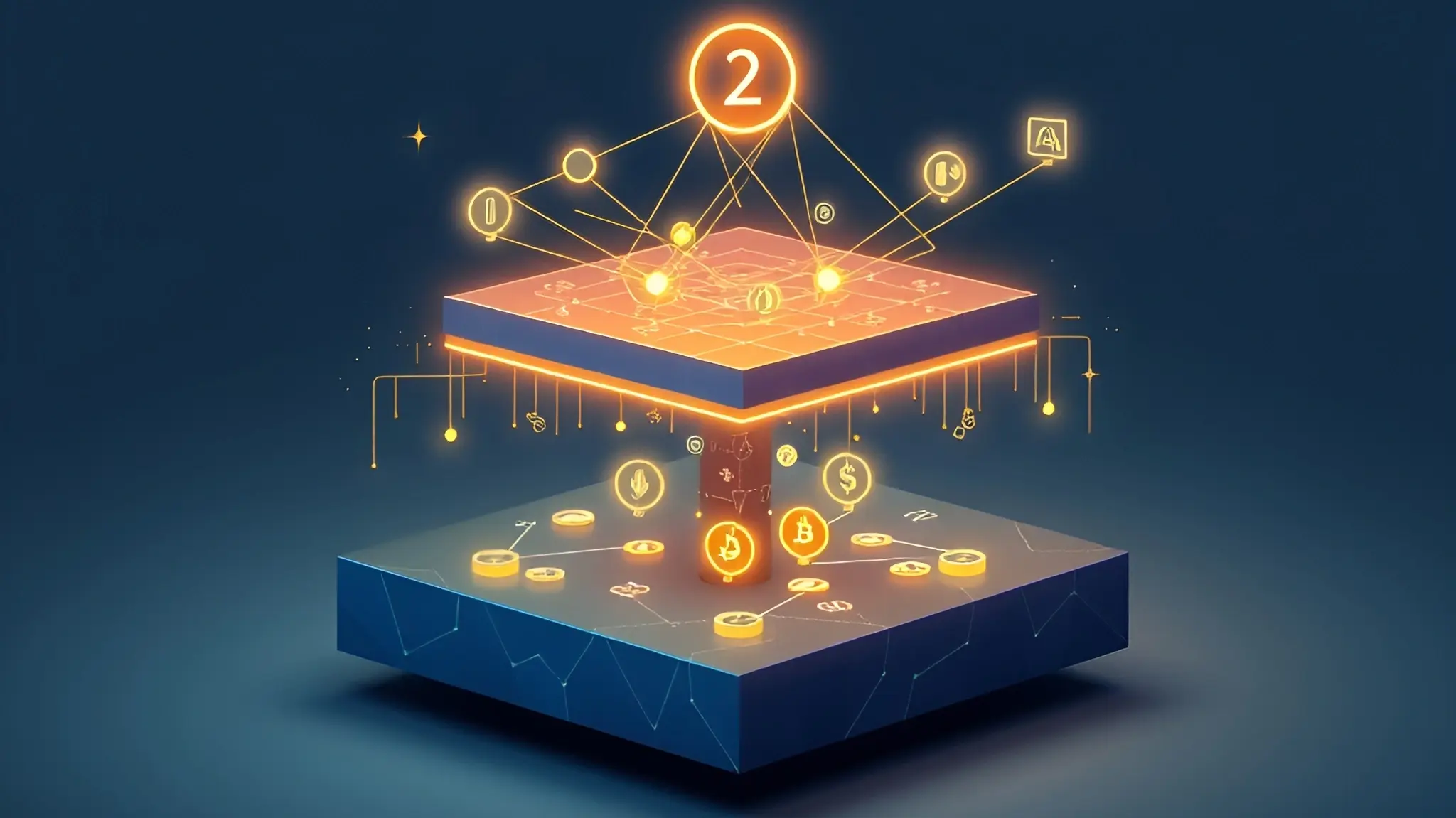What Is a Layer 2 Solution in Blockchain?
A Layer 2 solution is an extra layer or network built on top of an existing Layer 1 blockchain (like Bitcoin or Ethereum).
It aims to improve how fast transactions are processed and reduce fees by handling many operations off the main blockchain.
Later, it batches these operations and sends only final summaries to the base layer, which still provides security and consensus.
Key Takeaways:
ShowUnderstanding Layer 1 vs Layer 2
In blockchain, Layer 1 (L1) is the main network—like Bitcoin or Ethereum—that secures transactions and enforces core rules.
Layer 2 (L2) sits on top of L1 to handle many operations off the main chain, reducing the load on L1.
- Layer 1: The base protocol (e.g., Bitcoin, Ethereum), ensures security and consensus.
- Layer 2: Offloads transactions from Layer 1, improving speed and lowering fees while relying on Layer 1’s security.
1. How Layer 2 Solutions Work
Layer 2 solutions usually move most transaction processing off-chain:
- Off-Chain Execution: Transactions happen in a secondary environment.
- Aggregated Proofs: These transactions are bundled or summarized.
- On-Chain Finalization: A single, simplified record is then posted on the main blockchain.
This way, the main chain remains secure while the Layer 2 solution handles high volumes of transactions more efficiently.
2. Benefits of Layer 2 Solutions
- Higher Throughput: Process significantly more transactions per second.
- Lower Fees: Reduce on-chain load, cutting costs for users and developers.
- Better User Experience: Faster transactions encourage more widespread use.
- Retained Security: Depend on the main chain’s robust security features.
3. Popular Layer 2 Projects
Many Layer 2 solutions have been developed to help major blockchains handle more transactions efficiently.
- Ethereum Scaling Solutions: Polygon (Uses sidechains, faster and lower fees), Optimism (rollups to increase capacity), Arbitrum (Bundles transactions off-chain), zkSync (zero-knowledge proofs for speed and privacy).
- Bitcoin Layer 2 Innovations: Lightning Network (off-chain payment for quick and cheap transactions), Liquid Network (faster, more private transfers).
4. Real-World Use Cases
Layer 2 solutions aren’t just theoretical; they’re already improving real applications:
- Instant Crypto Payments: The Lightning Network speeds up Bitcoin transactions, making it more practical for daily purchases.
- Supply Chain Tracking: L2 solutions like zk-Rollups provide faster, confidential verification of goods.
- Gaming and NFTs: Microtransactions and in-game economies benefit from cheaper fees and faster settlement on L2 platforms.
- Identity Verification: Off-chain processing can protect user data while confirming credentials on the main chain.
The Need for Layer 2 Solutions

As blockchain usage grows, network congestion, high transaction fees, and slower processing can become big problems. Layer 2 solutions help by:
- Enhancing Scalability: Processing more transactions per second.
- Cutting Costs: Offloading activity from the main chain lowers overall transaction fees.
- Improving User Experience: Faster, cheaper transactions encourage broader adoption.
1. Scalability Challenges in Blockchain
Blockchains can slow down when many users transact at once. Traditional consensus methods (like Proof of Work) can lead to delayed confirmations and high fees, making the network less user-friendly.
2. High Transaction Costs
When a blockchain is congested, fees go up. This deters users and stifles broader adoption. Layer 2 solutions ease the demand on the main chain, reducing these costs.
3. Network Congestion Issues
Too many transactions at once create network bottlenecks. This can result in:
| Problem | Impact on Users | Layer 2 Solution |
|---|---|---|
| High Latency | Slower transaction times | State Channels |
| Increased Fees | Higher costs | Rollups |
| Network Instability | Unreliable performance | Sidechains |
| Limited Scalability | Restricted growth | Plasma |
Types of Layer 2 Solutions
Although there are various Layer 2 approaches, two major categories dominate:
1. State Channels
With state channels, users open a “channel” off-chain to exchange many transactions quickly.
Only the final state (like a closing balance) is submitted to the main blockchain. This process:
- Cuts Costs: Fewer on-chain transactions mean lower fees.
- Improves Speed: Instant confirmations off-chain.
- Offers Privacy: Off-chain transactions are not broadcast publicly.
- Scales Easily: Large volumes of rapid exchanges.
2. Rollups
Rollups group multiple off-chain transactions into one batch. This batch is then submitted to the main chain. Two popular forms are:
- Optimistic Rollups: Assume transactions are valid unless someone challenges them.
- zk-Rollups: Use zero-knowledge proofs to validate transactions, adding a cryptographic guarantee for both privacy and security.
Future of Layer 2 Technology

As blockchain adoption grows, the role of Layer 2 solutions is set to become even more important. Key trends include:
- Interoperability: Seamless transfers between different L2s and base chains.
- Greater Scalability: More sophisticated consensus mechanisms to handle bigger transaction loads.
- User-Friendly Interfaces: Easier tools and wallets to make L2 adoption simpler.
- Advanced Security: Ongoing improvements to cryptography and fraud detection.
Wrapping Up
Layer 2 solutions serve as a vital “second layer” to popular blockchains like Bitcoin and Ethereum.
By processing transactions off-chain and then finalizing them securely on Layer 1, they keep costs low and speeds high—without sacrificing decentralization or security.
As blockchains continue to evolve, the growth and refinement of Layer 2 solutions will play a critical role in shaping faster, cheaper, and more user-friendly decentralized networks for everyone.
Frequently Asked Questions (FAQs)
How Do Layer 2 Solutions Impact Transaction Fees?
By moving most transactions off-chain, Layer 2 solutions significantly reduce network congestion, leading to lower fees for everyone on the main chain.
Can Layer 2 Solutions Be Used on Any Blockchain?
Most blockchains (roughly 70% and growing) are exploring Layer 2 options. While each blockchain has unique technical requirements, L2 can generally be adapted if the chain supports interoperability and flexible protocols.
What Is the Role of Security in Layer 2 Solutions?
Security remains crucial: Layer 2 solutions inherit the security of the main chain but must still protect against fraud in off-chain transactions (e.g., using fraud proofs in optimistic rollups or cryptographic proofs in zk-rollups).
Are Layer 2 Solutions Suitable for All Types of Applications?
Suitability depends on the application’s needs (transaction speed, volume, and security requirements). High-volume apps, like gaming or microtransactions, often benefit most, while smaller use cases might remain fine on Layer 1.
How Do Users Interact With Layer 2 Solutions?
People typically interact through wallets or dApps that automatically route transactions to Layer 2 networks, handling the complexities behind the scenes. In practice, it often feels similar to using the main chain, just faster and cheaper.

